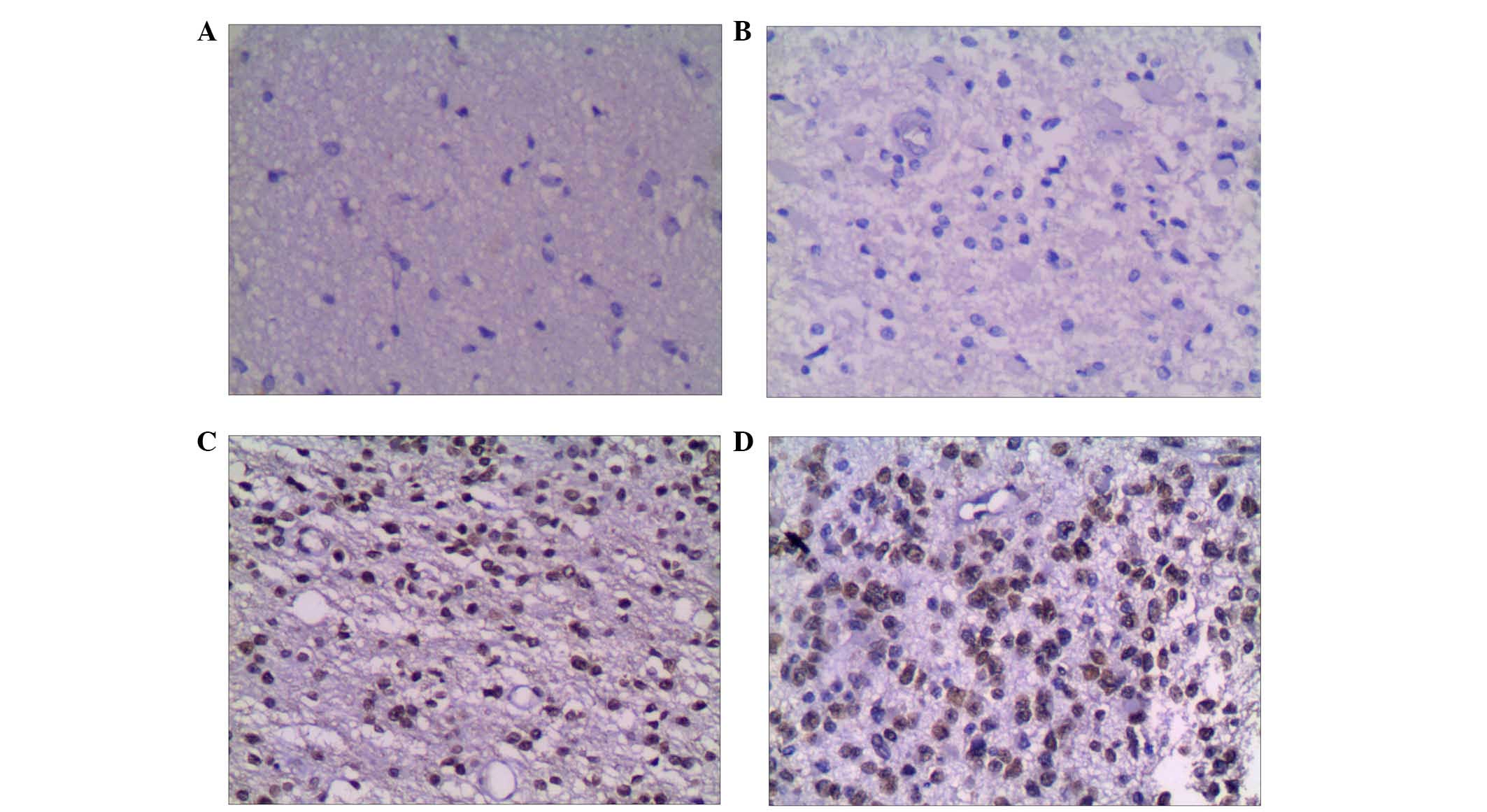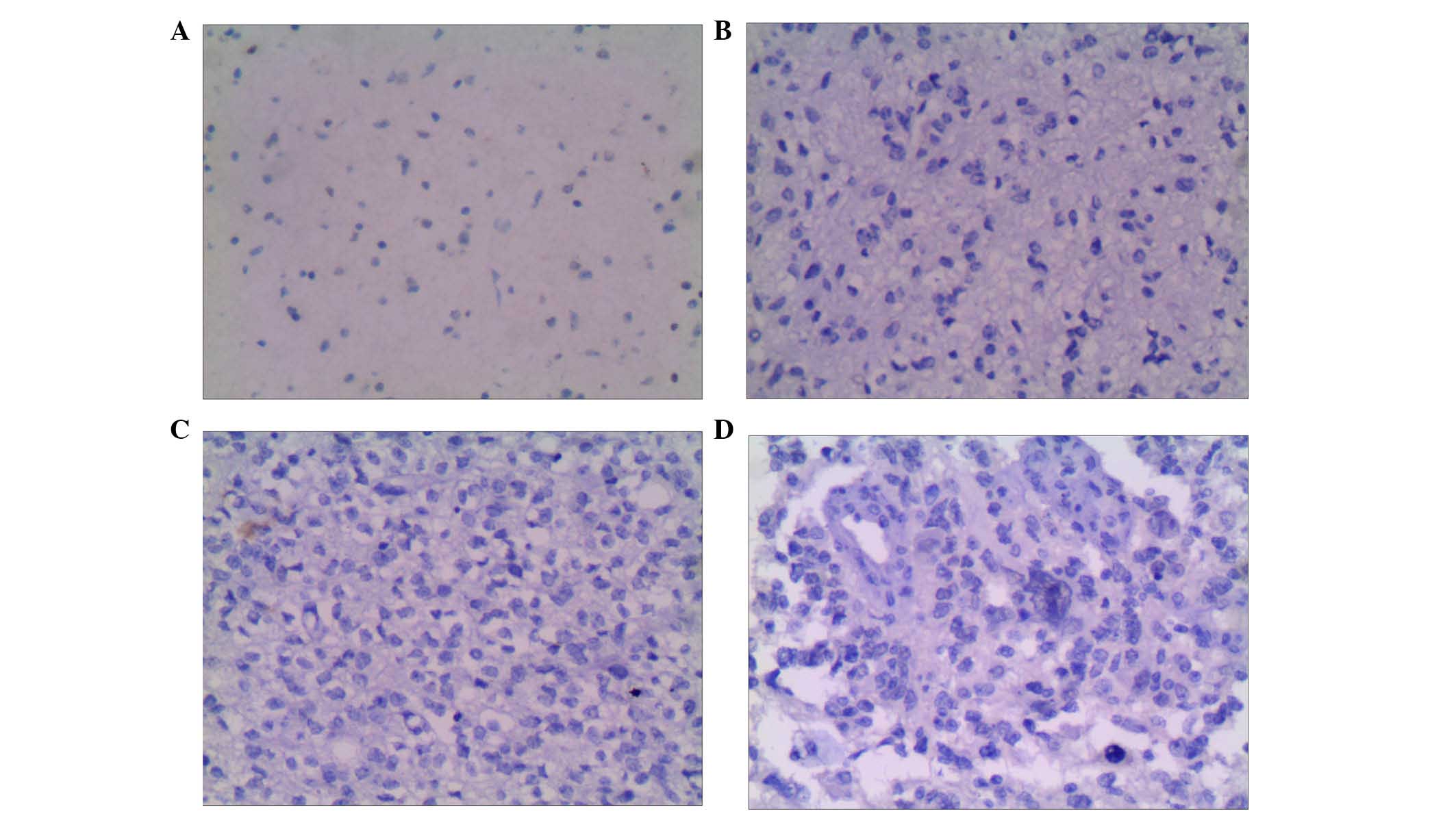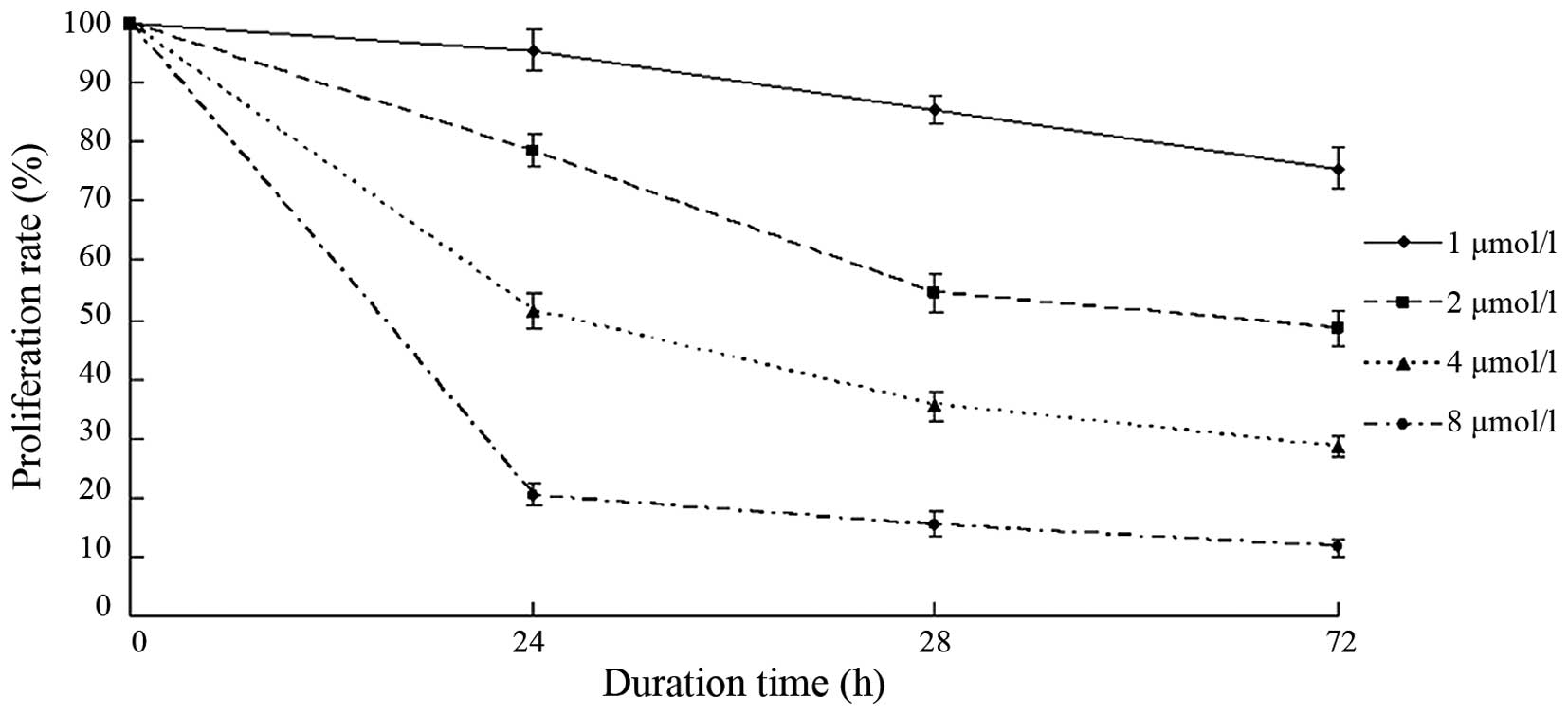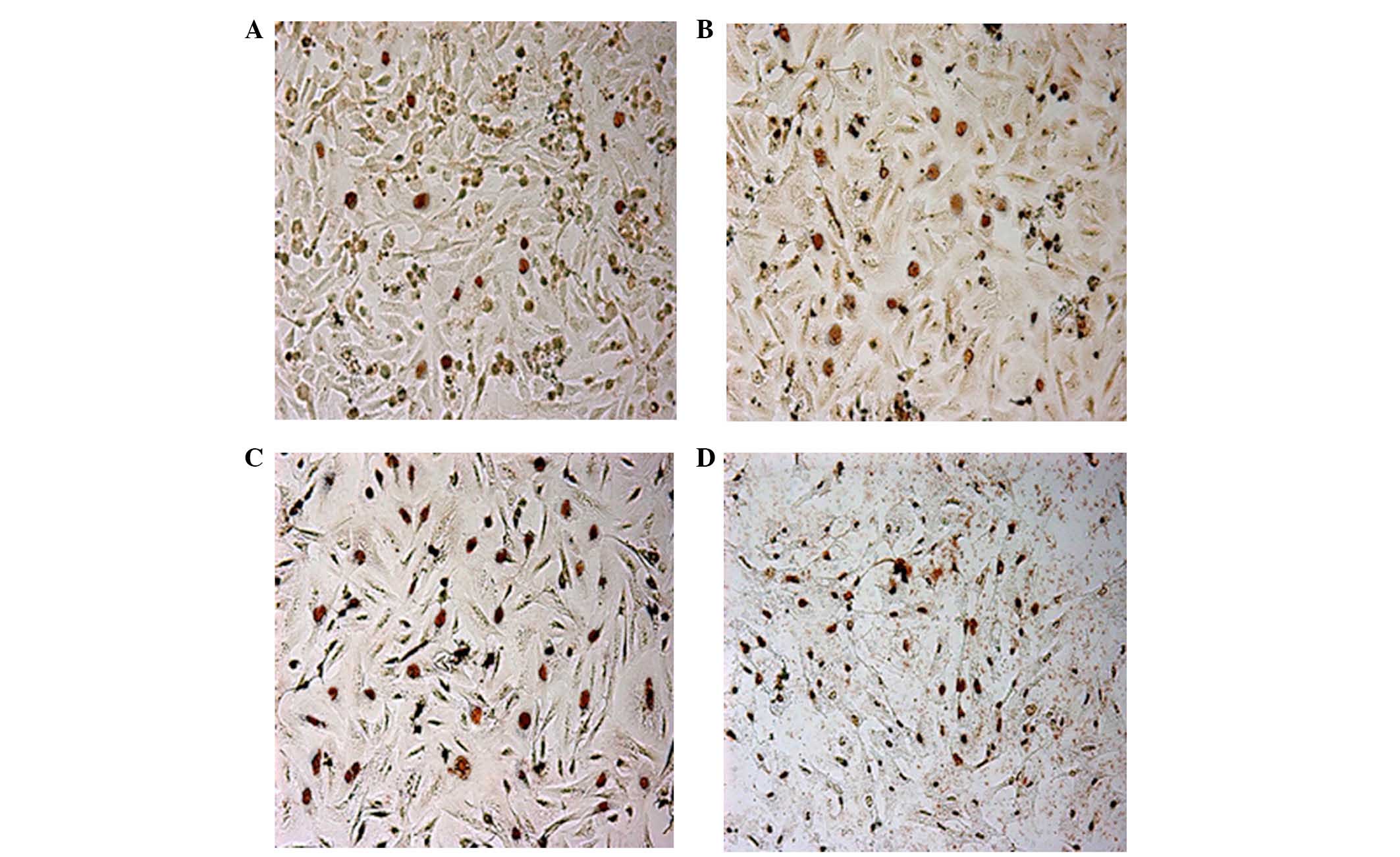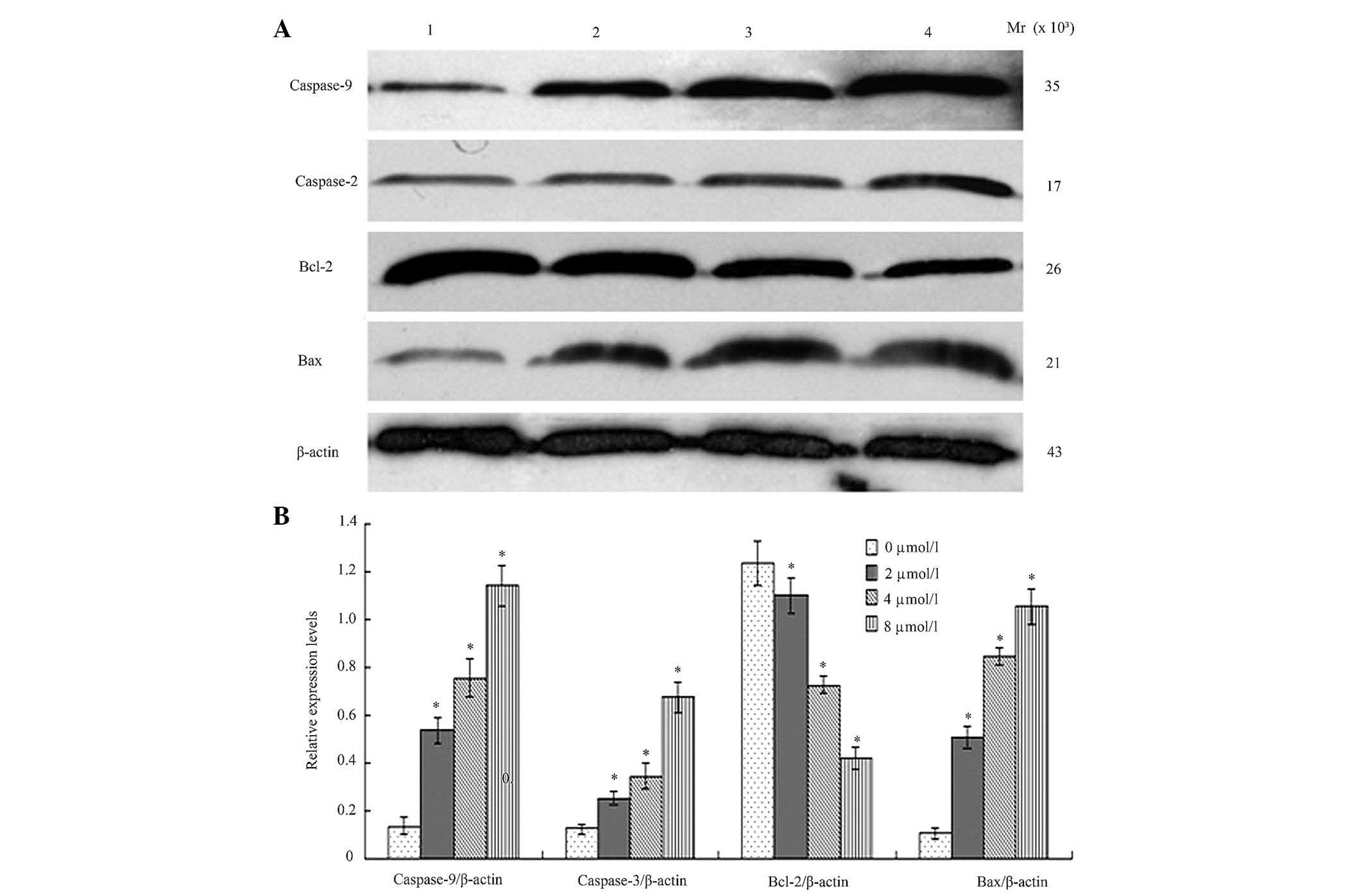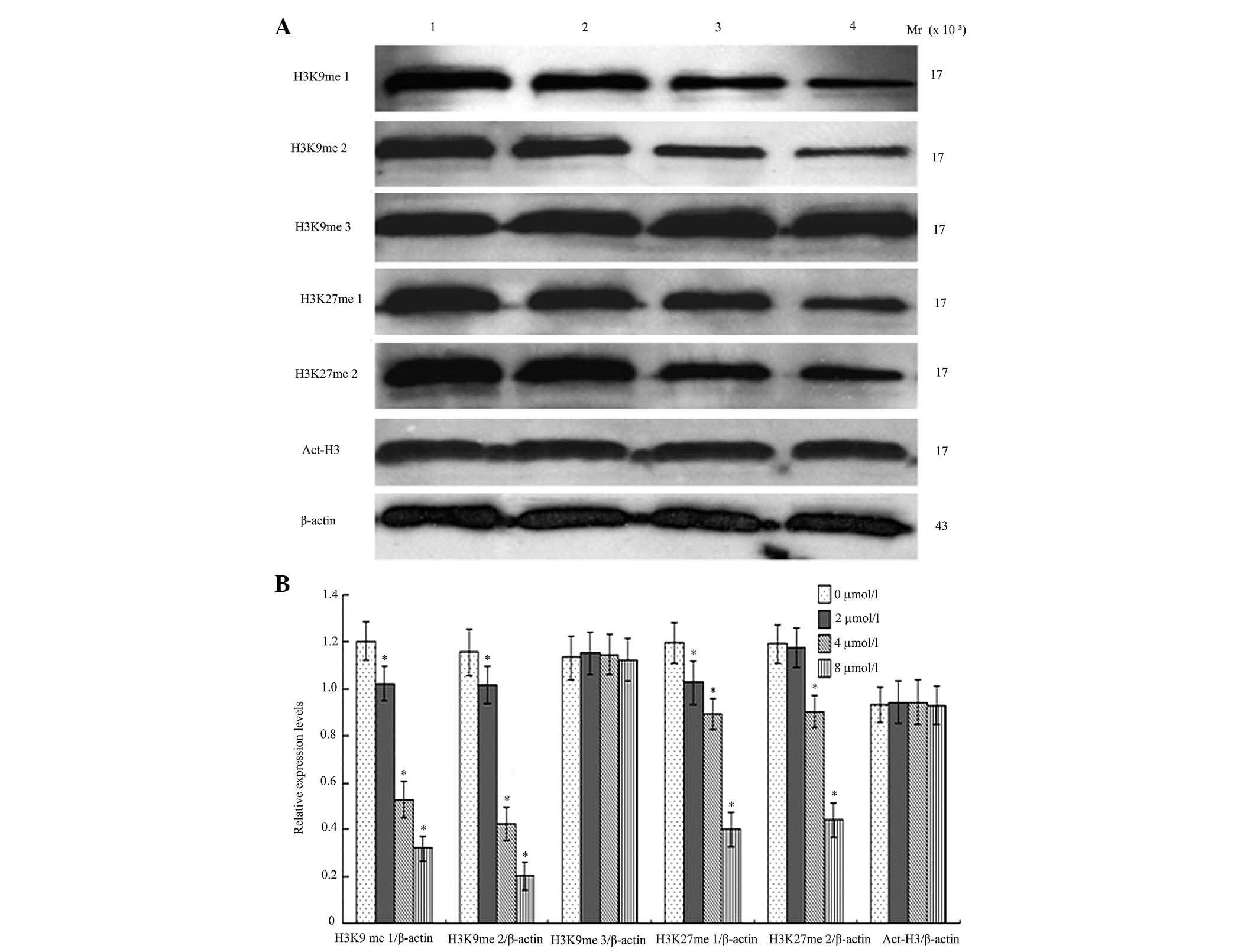Mechanism of G9a inhibitor BIX‑01294 acting on U251 glioma cells
- Authors:
- Published online on: October 6, 2016 https://doi.org/10.3892/mmr.2016.5815
- Pages: 4613-4621
-
Copyright: © Guo et al. This is an open access article distributed under the terms of Creative Commons Attribution License.
Metrics: Total
Views: 0 (Spandidos Publications: | PMC Statistics: )
Total PDF Downloads: 0 (Spandidos Publications: | PMC Statistics: )
Abstract
The present study aimed to investigate the differential expression and clinical significance of histone methyltransferase G9a, histone H3K9me2 and histone H3K9me1 in human brain glioma and adjacent tissue samples. It also aimed to observe the effect and mechanism of BIX‑01294, as an inhibitor of methyltransferase G9a, on the proliferation, apoptosis, methylation of H3K9 and H3K27, and the acetylation in U251 glioma cells in vitro. The differential expression of methyltransferase G9a, histone H3K9me2 and histone H3K9me1 in in human brain glioma and adjacent tissues were analyzed by immunohistochemistry, a growth curve of U251 cells following treatment with BIX‑01294 was determined using the MTT assay. In addition, the apoptosis percentage of U251 cells was analyzed by TUNEL assay and the expression levels of apoptosis‑associated proteins, including B‑cell lymphoma 2 (Bcl‑2), Bcl‑2‑associated X protein (Bax), caspase‑9 and caspase‑3, and the acetylation of histones, including H3K27me1, H3K27me2 and H3 in U251 were analyzed by western blot following BIX‑01294 treatment. The positive rate of G9a in glioma tissues was 86% (43/50), which was significantly different from 42% (21/50) in adjacent tissues (P<0.01). The positive rate of H3K9me2 in glioma tissues was 82% (41/50), which was significantly different from 38% (19/50) in adjacent tissues (χ²=18.38; P<0.01). The expression of G9a and H3K9me2 were associated with the World Health Organization (WHO) glioma grade. The positive rate of H3K9me1 in glioma tissues was 54% (27/50) and 44% (22/50) in adjacent tissues, though this result was not significantly different (χ²=1.21, P>0.05). BIX‑01294 inhibited the proliferation of U251, downregulated expression of Bcl‑2, and upregulated expression of Bax, caspase‑3 and caspase‑9, and induced apoptosis of U251. BIX‑01294 downregulated H3K9me1, H3K9me2, H3K27me1 and H3K27me2, however, it did not affect the acetylation of H3K9me3 and H3. High expression of G9a and H3K9me2 in glioma tissue samples was associated with the WHO grade, which indicated that G9a and H3K9me2 may promote generation and development of glioma. BIX‑01294 inhibited proliferation and induced apoptosis of glioma cells, changes in methylation of H3K9 and H3K27 resulting in conformational changes of chromosome may be an underlying mechanism. BIX‑01294 may be a potential novel therapeutic agent in the treatment of glioma.



